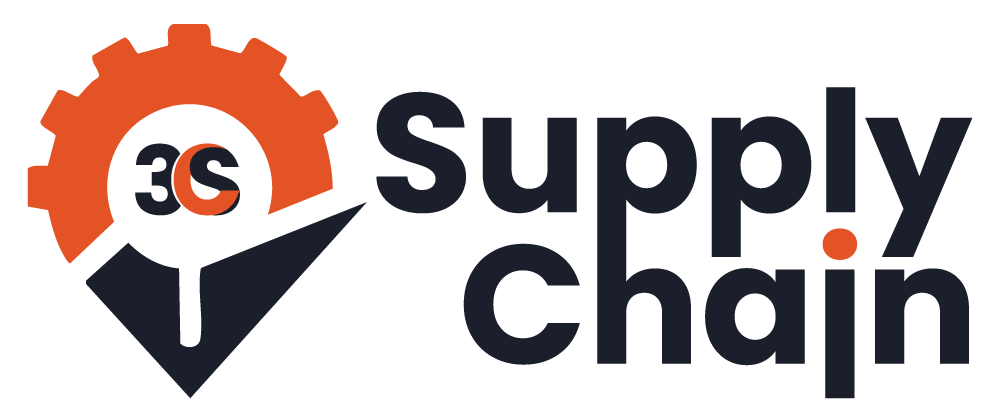A vendor once shared how delays from his supplier left him with empty shelves and confused customers. Without a clear view of incoming goods, he made daily guesses—sometimes right, often not. That uncertainty cost him sales and trust. But once he started tracking shipments and coordinating closely with his supplier, things changed. Deliveries became predictable, planning became easier, and business picked up.
In today’s supply chain environment, visibility isn’t optional—it’s essential. When each part of the chain operates in isolation, even small gaps can create big problems.
This blog will walk you through why supply chain visibility matters, what makes real-time supply chain visibility effective, and how businesses are using technology to unlock end-to-end control.
Let’s get started.
Table of Contents
What is supply chain visibility?
Supply chain visibility refers to the ability to monitor every stage of the product journey from sourcing raw materials to final delivery without losing sight of any critical step. It’s not just about tracking items on a dashboard; it’s about having a complete, real-time understanding of how each function connects across the chain.
When different teams procurement, production, warehousing, and transport share accurate and timely information, businesses can respond quickly to disruptions. Instead of reacting to surprises, they’re better positioned to plan ahead and adjust with precision.
This level of real time supply chain visibility has become essential for handling unpredictable demand, avoiding stockouts, and keeping service levels consistent. It turns fragmented operations into a connected system, helping companies move from reactive to proactive.
Whether it’s about managing inventory across regions or coordinating last-mile delivery, supply chain visibility solutions give businesses the clarity they need to reduce delays, optimize costs, and make smarter decisions step by step.
Why does real-time supply chain visibility matter for modern businesses?
Supply chains move fast so fast that even a small delay can ripple through operations and cause significant disruption. When every team and process works with incomplete or outdated information, bottlenecks appear, resources go to waste, and customers face disappointment.
That’s where supply chain visibility plays a crucial role. It helps teams detect issues before they escalate whether it’s a shipment that’s running late or inventory that’s about to run out. This foresight allows businesses to adjust plans quickly, minimizing risk.
With real-time supply chain visibility, it becomes easier to coordinate departments, prevent miscommunication, and ensure every part of the chain moves in sync. Companies can adapt faster, meet customer expectations with more confidence, and reduce unnecessary costs tied to delays or overstock.
In today’s dynamic environment, supply chain visibility solutions aren’t just useful they’re essential. They enable a level of control that helps businesses navigate uncertainty, improve service reliability, and respond to change with clarity.
How do real-time insights improve supply chain operations?
- Faster Reaction Times
Real time supply chain visibility allows teams to identify disruptions as they happen whether it’s a delayed shipment or an unexpected inventory shortfall. - Increased Coordination
Real-time updates connect every node suppliers, warehouses, carriers helping all stakeholders work in sync instead of reacting in isolation. - Smarter Decision-Making
With up-to-the-minute data, supply chain managers can adjust routing, schedules, and stock levels without guesswork. - Less Waste and Redundancy
When operations are guided by real-time supply chain visibility technology, resources are allocated more efficiently, reducing costs tied to overproduction or last-minute fixes. - Improved Service Reliability
Visibility in real-time helps ensure orders are fulfilled on time, supporting consistent delivery performance across markets. - Enhanced Agility
Being able to adapt instantly to shifts in demand or supply gives businesses a competitive edge in dynamic environments.
What are the main challenges in achieving end-to-end supply chain visibility?
- Isolated Systems
When supply chain tools for procurement, logistics, and inventory are not connected, it leads to blind spots across operations. - Outdated or Delayed Information
Without real-time updates, decisions are based on past data causing missed opportunities or stock mismatches. - Lack of Collaboration
Poor alignment between departments or partners weakens supply chain visibility, resulting in delays and miscommunication. - Resistance to New Technology
Teams sticking to manual workflows often struggle to adopt supply chain visibility technology that enables better insights. - Limited Partner Integration
Gaps appear when external vendors or carriers don’t share status updates, blocking full visibility across the supply chain. - Data Overload Without Context
Too much scattered data can confuse teams, making it hard to extract actionable insight and focus on priorities.
How does technology support supply chain visibility solutions?
- Real-Time Tracking Tools
Modern systems offer real-time updates on goods in motion, helping teams avoid delays and plan more accurately. - Centralized Dashboards
Visibility platforms consolidate data from suppliers, logistics, and production into a single view for easier decision-making. - Automated Alerts and Notifications
Proactive alerts inform teams of potential disruptions, allowing quick adjustments without manual checks. - Seamless System Integrations
APIs and cloud-based tools connect logistics software, inventory systems, and supplier networks, removing operational silos. - Predictive Insights from AI
AI in supply chain visibility helps anticipate delays, suggest alternate routes, or forecast stock requirements with greater accuracy. - Mobile-Enabled Monitoring
Mobile apps give real-time supply chain visibility to on-the-ground staff, enhancing responsiveness across operations.
How does visibility directly impact supply chain performance?
- Fresh Goods Stay Fresh
By syncing daily harvest updates with delivery schedules, sellers ensure perishable items reach markets in peak condition. - Tailored Delivery Precision
Seamless tracking of fabric shipments helps manufacturers maintain tight timelines and fulfill customer expectations without last-minute rushes. - Uninterrupted Production Runs
Monitoring raw material inflows prevents downtime during high-demand periods, keeping workflows uninterrupted. - Minimized Spoilage
Real-time coordination between suppliers and retailers helps fast-moving inventory like seafood or dairy arrive and sell before expiration. - Better Stock Handling
Retailers tracking inbound and outbound stock avoid both overstocking and empty shelves, especially during seasonal peaks. - Order Fulfillment Without Delays
Visibility at every step reduces miscommunication between storage, packing, and last-mile delivery, leading to faster customer service.
What are the key benefits of improving supply chain visibility?
- Reduced Operational Delays
Real-time supply chain visibility helps spot shipment or transit slowdowns before they cause workflow disruptions. - Improved Customer Experience
On-time deliveries and accurate order tracking boost customer satisfaction and trust. - Stronger Inventory Planning
End-to-end visibility in the supply chain ensures accurate stock levels, supporting demand forecasting and avoiding stockouts or excess. - Lower Logistics Costs
Better route planning, reduced idle time, and optimized delivery schedules translate into noticeable savings. - More Coordinated Teams
Seamless information sharing between departments and suppliers improves alignment across operations. - Faster Issue Resolution
With complete visibility, teams can trace problems to their source and respond quickly minimizing disruption.
How is artificial intelligence transforming supply chain visibility?
- Predictive Planning Becomes Proactive
AI in supply chain visibility helps forecast changes in demand or supply disruptions before they escalate. - Faster, Smarter Decisions
Machine learning models quickly analyze real-time data, enabling teams to adjust routes, resources, or inventory without delays. - Seamless Workflow Integration
AI systems unify supply chain visibility tools across departments removing silos and increasing transparency. - Improved Demand-Supply Matching
By learning from historical patterns, AI ensures inventory aligns with actual demand, reducing waste and shortages. - Adaptive Responses to Disruptions
With AI-powered alerts and recommendations, supply chain visibility technology helps teams respond swiftly to the unexpected. - Scalable Visibility Across Networks
AI supply chain visibility systems expand across suppliers, geographies, and functions, offering consistent end-to-end clarity.
What does the future of supply chain visibility look like?
- End-to-End Clarity Will Become the Norm
Businesses are moving toward systems that connect every step from sourcing raw materials to final delivery without gaps. - Real-Time Supply Chain Visibility Will Be Standard
Instant updates and live tracking will no longer be a competitive edge but a basic requirement for smooth operations. - Integrated Systems Will Replace Silos
Disconnected tools are giving way to unified platforms, improving collaboration across suppliers, warehouses, and logistics teams. - AI Will Power Predictive and Preventive Moves
Supply chain visibility technology will use AI not just to show what’s happening, but to suggest what should happen next. - Adaptability Will Drive Long-Term Resilience
Visibility won’t just be about monitoring it will help businesses adapt faster to change, ensuring supply chains stay stable under pressure. - Sustainability Will Gain Transparency
Greater visibility will also reveal environmental impact, helping organizations reduce waste and improve accountability.
Conclusion
Supply chain visibility is no longer just a helpful feature it’s a foundation for smarter decisions and steady growth. When businesses gain end-to-end insight, they’re better prepared to handle shifts, avoid costly disruptions, and stay aligned across every link in the chain.
Real time supply chain visibility lets teams act, not just react bringing more control, faster adjustments, and fewer surprises. It’s not about chasing every update; it’s about creating a flow where information guides action with purpose.
As supply chains grow more complex, visibility becomes the thread that connects everything people, processes, and partners. The clearer the path, the stronger the response. And for those seeking stability in uncertain times, that clarity makes all the difference.

